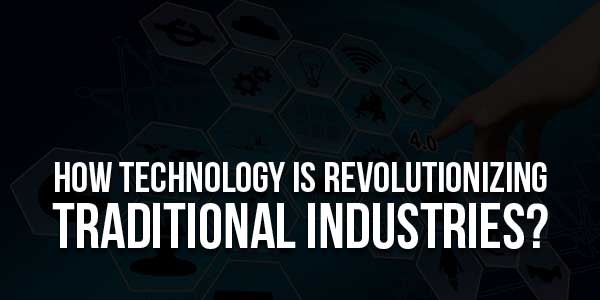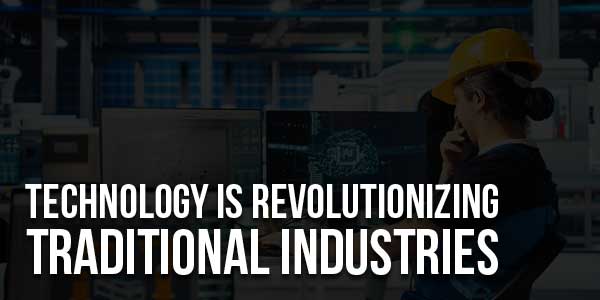
Technology has become the driving force behind transformation across nearly every sector, redefining how traditional industries operate, compete, and deliver value. From automation to artificial intelligence, digital innovation is bridging the gap between old and new, helping businesses increase efficiency, enhance customer experiences, and remain resilient in changing markets. Whether it’s manufacturing, agriculture, or healthcare, industries once bound by manual processes are now embracing smart systems and data-driven decision-making. In this article, we explore how technology is revolutionising traditional sectors, with real-world examples that highlight the impact of innovation on business growth, sustainability, and long-term success.
Table of Contents
1.) Manufacturing: From Manual Production to Smart Automation:
Manufacturing was once characterised by repetitive labour and rigid production lines. Today, Industry 4.0 technologies, such as robotics, IoT (Internet of Things), and predictive analytics, have redefined the entire landscape. Smart factories now use sensors and connected machinery to track performance in real time, reducing downtime and increasing precision. For instance, Siemens’ “digital twin” technology allows manufacturers to create virtual models of their production systems, enabling them to detect flaws before they occur.
2.) Construction: Building the Future with Digital Innovation:
The construction industry, once slow to adopt change, is now harnessing technology to improve safety, efficiency, and project management. Tools like Building Information Modelling (BIM) allow architects, engineers, and contractors to collaborate using 3D digital blueprints, minimising design errors and project delays. Drones are being used for surveying, progress tracking, and site inspections, while augmented reality (AR) helps visualise complex designs in real-world settings.
3.) Agriculture: Smart Farming for a Sustainable Future:
Agriculture has embraced technology to meet growing global food demands and adapt to environmental challenges. Smart farming tools, including satellite imaging and soil sensors, provide real-time insights into crop health and resource use. Farmers can now monitor moisture levels, predict weather patterns, and apply fertilisers with pinpoint accuracy, reducing waste and maximising yields. A prime example is John Deere’s precision agriculture system, which uses machine learning and GPS-guided equipment to optimise planting and harvesting. This digital transformation is helping farmers operate more sustainably while securing the future of food production.

4.) Healthcare: Digital Solutions Saving Lives:
Healthcare has experienced one of the most profound technological revolutions. Telemedicine, wearable devices, and AI-powered diagnostics have made healthcare more accessible, personalised, and efficient. Platforms like Teladoc have bridged geographical gaps, connecting patients to medical professionals remotely. Meanwhile, AI-driven systems like IBM Watson assist doctors by analysing massive amounts of data to recommend treatment options. Even robotic-assisted surgeries are becoming common, offering precision that human hands alone cannot achieve. These innovations are not only improving patient outcomes but also reducing healthcare costs and hospital strain.
5.) Retail: The Rise of E-Commerce and Data Analytics:
Retail has evolved far beyond physical stores. The integration of e-commerce, artificial intelligence, and big data has created a more customised and convenient shopping experience. Online platforms such as Amazon use predictive algorithms to recommend products based on consumer behaviour, while AI chatbots handle customer inquiries instantly. Brick-and-mortar retailers are also adapting with technologies like cashierless checkout and virtual fitting rooms. The result is a hybrid retail model that merges digital convenience with physical engagement—reshaping how consumers shop and interact with brands.
6.) Transportation: Smart Mobility and Automation:
The transportation sector is another major beneficiary of technological disruption. Electric vehicles (EVs), autonomous driving systems, and advanced logistics software are transforming how goods and people move. Companies like Tesla and Waymo are at the forefront of this evolution, pushing the limits of driverless technology and sustainable mobility. In logistics, real-time tracking and route optimisation software help businesses save fuel, reduce delays, and improve delivery reliability. Public transport systems are also adopting smart ticketing and traffic management technologies to enhance commuter experiences and reduce congestion.
7.) Finance: From Banks to Blockchain:
The financial industry has seen a surge in technological adoption through fintech innovation. Mobile banking apps, digital wallets, and blockchain technology have made financial transactions faster, more transparent, and accessible to everyone. Cryptocurrencies like Bitcoin and Ethereum have introduced decentralised finance (DeFi), while AI algorithms detect fraud and improve credit scoring accuracy. Even traditional banks are leveraging automation and chatbots to streamline customer service.
Final Remarks:
Technology is no longer an optional upgrade; it’s the foundation of progress across traditional industries. The real-world examples above demonstrate how innovation not only boosts efficiency but also fosters resilience in a rapidly evolving global economy. As technology continues to advance, industries that adapt early will lead the way, setting new standards for sustainability, profitability, and human ingenuity.

 About the Author:
About the Author:
















Be the first to write a comment.